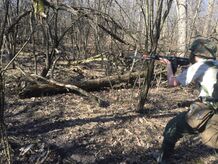Great Des Plaines Valley War
| Great Des Plaines Valley War | |||||||
|---|---|---|---|---|---|---|---|
| Part of the Tension Wars | |||||||
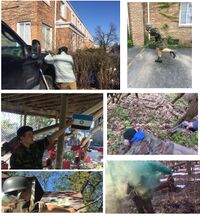 (Clockwise from top-left) A standoff during the Siege of Bobbygrad • Weimar solider during the New German Revolution • A Weg prisoner of war taken by Kapreburg • Smoke attacks on Hilda • Rodentian forces defending Rainbow Bridge • The flag of Wegmat raised at Fort Bat-a-ball | |||||||
| |||||||
| Belligerents | |||||||
Diplomatic support |
Diplomatic support | ||||||
| Commanders and leaders | |||||||
|
|
| ||||||
| Strength | |||||||
|
10 infantry troops 5 ships 4 Aircraft |
8 infantry troops 6 ships 5 aircraft | ||||||
| Some names are pseudonyms. | |||||||
| Wegmat |
| This article is part of the series |
| History of the Federal Union of Wegmat |
|
|
|---|
The Great Des Plaines Valley War was a war between the anti-imperialist Liberation Coalition and the imperialist Urraca Pact lasting 5 months and 5 days between March and August 2021. The war began when Edward Oaches, Jack O’rav and a group of mercenaries overthrew the Rodentian government and military and instigated a siege in Bobbygrad. The war became more serious when the Urraca Pact was formed between the Philmont Confederation and Rodentia, causing them to invade the Rainbowlands, a region with several intermicronational territories. Doing so invoked response throughout the intermicronational community. Soon after, the New German Autonomous Province of Wegmat broke away from the Federal Union and joined the Urraca Pact, causing the war to drag on. The war ended as the Urraca Pact broke apart after diplomatic problems between the three members and the fall of Philmont and Rodentia.
Background
In early 2021, Edward Oaches threatened to invade territories in the Rainbowlands by April of that year. He was known as the Mud Guy, as Edward was the CEO of the Des Plaines River Company. On 5 March, Edward led a coalition of militants, including former terrorist Jack O’rav, to the Rodentian Federal Center in Sunrise, Rodentia. The president of the Republic of Rodentia, Sinlo Chambel, was evacuated to Prarik and later Two Pine.
Immediately after the coup, Edward required that all citizens would have to join the Rodentian Imperial Army and that all current G.I. were to be deployed to Bobbygrad or defensive positions within Rodentia.
Timeline
Siege of Bobbygrad

On 6 March, Rodentian forces invaded the city of Bobbygrad, taking up positions within a building in the northern part of the city. New German soldiers, followed by forces from Wegmat and New Macedonia, arrived soon after. Following a firefight, Rodentian troops ran out of ammunition and retreated; a platoon of the Wegmat Marines was sent to check all streets in Bobbygrad in order to make sure that they would not link up with another unit. The streets were reported to be clear.
The Rodentian forces that engaged in Bobbygrad met up with other RIA forces north of Fort Priory. Following this, Alley Coalition forces took up positions east of these Rodentian forces, with the 1st Armored Division of Wegmat opening fire on them with an Airsoft machine gun. In addition, a platoon was sent north to flank them; a ceasefire was called once these forces were roughly 25 feet away from the Rodentian force, with the latter agreeing to retreat. Following the defeat, Rodentia formally declared war on Wegmat the following day.
Invasion of Hilda
On 7 March, Rodentia invaded the area near Isadora, the capital city of Hilda. Alley forces, which were stationed at a railroad that Rodentia used to perform the invasion, opened fire upon Rodentian forces, resulting in their retreat. Following the battle, American police were dispatched to the location, resulting in all combatants involved to retreat.
L-Day
1. Soldiers of the 2nd Infantry Division of the Weg Marines defending Hupert Canyon.
2. A soldier of the 2nd Infantry Brigade, part of the 2nd Army of the Revolutionary Army, defending the County of the Rainbowlands.
3. A soldier from the Chaveleir Union assisting in the defense of Aenopian Potawatomi.
On 19 March, Rodentia, alongside the Philmont Confederation, launched an invasion of the Rainbowlands and northern Wegmat, with the goal being to capture the former and to cut off supply routes in the latter. The Rainbowlands front of this campaign is referred to as the "Battle for the Rainbowlands", while the northern front is referred to as the "Battle of the Bay".
During the Battle of the Bay, Rodentian forces crossed Sunrise Bridge, capturing an intersection between Wegmat Route 4 and Provincial Road 10, in addition to the port of Key Tinalè, with little resistance. Following news of the invasion reaching Wegmat, the 2nd Infantry and 1st Armored Divisions were dispatched towards the city of Evansville; intelligence suggested that Rodentian forces would occupy the Hilda Highlands, making it impossible to supply the northern territories with Weg infrastructure. Both sides met and fought at Huppert Canyon; following the battle, Rodentian forces retreated to Provincial Road 11.
Immediately following the battle at Huppert Canyon, the 1st Cavalry Division of Rodentia and the Foreign Legion of Philmont invaded the Rainbowlands, going through the territories of Nichensburg, Saspearian, Tesforia and Paloma before reaching the Lawrence Line, which took roughly 30 minutes; upon reaching the Lawrence Line, Lieutenant General Bull of Philmont was given command of the operation. Following this, the joint force split into two: the 1st Cavalry went northwest through the territories of Begon and Monmark, while the Foreign Legion went through intermicronational territory towards Aenopian Potawatomi.
At the same time, the Chaveleir Union was deploying forces towards the border of Aenopian Potawatomi in order to defend it; following the passing of declarations of war against Philmont and Rodentia by the people of the Chavelier Union, Chavelier troops entered the territory, but were forced to retreat due to heavy fire. Following this, both armies crossed the Des Plaines River in order to invade the County of the Rainbowlands.
Upon entering the county, the joint force was met with heavy resistance; as such the invasion ground to a halt. In order to counter this, Rodentian forces moved south into Chavelier territory in order to encircle the Rainbowlands; however, they were stopped in the Catherine Commune. Following the invasion, Rodentia and Philmont came to an agreement where Philmont would occupy all territories north of the Lawrence Line, while Rodentia would occupy all territories south of it.
End of the Siege of Bobbygrad
Allyy militia members, backed by Rodentia, officially stopped fighting on 25 March; however, a group named the Sakaki clan did not. No fighting happened other than domestic riots. On the same day, Alley leader Lav and Vladimir Baruh negotiated peace; the final deal was that New Germany had half control of the, with the other half being independent. This didn't satisfy Sakaki clan leadership, however, who vowed for victory. On 1 April 2021, passed an act that disregarded the previous peace deal. On 7 April 2021, Sacaiv and Vladimir Baruh disused a peace deal that Sacaiv liked; as a result, fighting officially ended. The two groups mentioned, however, do still feel anti-Weg and are planning an offensive against Wegmat as a whole rather than the entire Allied force.
New German Revolution

On 9 April, during a diplomatic visit of the Weg Prime Minister Cole Baird, Vladimir Baruh announced that the Empire of New Germany would be reformed. Negotiations immediately began between the two leaders, going nowhere. The Wegmat Authority deemed it necessary to evacuate the Prime Minister from Bobbygrad. The New German Autonomous Province's Military was de jure dissolved by the Weg military, with the highly supported empire already organizing a new military. Weg forces were evacuated from Fort Priory to defensive positions northwest of Westerwald and directly east of Bobbygrad Airport. With New Germany entering the war for the Urraca Pact, Weg military officers were worried about losing their largest arms supplier.
Invasion of Hillda and Essef
On 29 April, a New German (now joint Weimar-Rodentian) force, including the 2nd Observation Regiment and 1st Imperial Infantry, were sent to capture the surrounding area of Rainbow Bridge. A small Weg force opposed New German entry of Hilda; however, they were repelled due to being outnumbered. This is the first time that, since March, an attempt was made to invade Hilda and Essef. The Weg president, Vincent C., was present for a speech about the drug epidemic in America. He was evacuated when Weimar soldiers crossed the border.
Rodentian forces attempted to hold a siege as they remained in Little Warsaw. On 1 May, the Weimar 1st Panzer Division and Rodentian 3rd Imperial Calvary pushed up the railroad tracks and occupied the area .5 km east of Little Warsaw with little to no resistance. On 2 May, the Weimar 1st Panzer Division and Rodentian forces fought against Weg forces in the area, reportedly from WM Calvary.
Weg counter-offensive
On 5 May, Commander Dan Smith of the Wegmat Marines led a counter-offensive and liberation of captures areas in southern Hilda. The Wegmat Marines sent calvary down the railroad tracks towards Little Warsaw. At 4:30, Weg calvary crossed Rainbow Bridge into Rodentia. A reconnaissance mission into Rodentia earlier in the day cleared the invasion and reported little defense across the border.

The calvary regiments reached the Rodentian city of True Rainbow, entering the urban core. At the center of the city was a heavily defended fort that was the headquarters of the 4th Army Corps of Rodentia, known as Fort Bat-a-ball. Much of the officers and soldiers were not present; a battle erupted as Weg forces attempted to capture the fort, which overlooked much of the city. Fort Bat-a-ball was captured by Weg forces, with a Weg flag being raised. As a result of the battle, the Urraca Pact no longer controlled most of the provinces of South Lincoln and North Lincoln; as a result, the Army Corps headquarters was moved south of the Lincoln River.
Occupation of Priory
After the end of the New German Revolution, Weimar troops were sent to occupy the Priory Grasslands and the city of Trel. Weg officials attempted to negotiate the withdrawal of Weimar soldiers in the area, however Weimar stuck to its unconditional surrender policy. Intelligence reports have said that it will be incorporated into the Weimar province of Die Heimat.
Whynofly
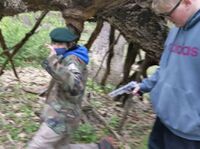
Kapreburg entered the war by joining the Urraca Pact and declaring war on Wegmat. On 8 May, the Kapresh Royal Army entered Abierta, searching for a Weg force that was on their way. Weg forces were not able to come in contact with the force until First Class Officer Weiler encountered Jack Morris. The forces moved south of Loves Peak, where a battle began. Weg machine gunnery forced the Kapresh to fall back past Cape Chad to the Whynofly town of Interior.
Wegmat searched for the force throughout southern Abierta but could not find anyone and declared victory; just then, a Weg soldier, had deserted the Regiment and surrendered to Kapresh forces in the town. The remaining Weg regiment entered the town, resulting in a second battle. Wegmat quickly ran out of ammunition and Weiler had to surrender, resulting in the loss of Whynofly to Kapreburg.
Rodentian labor camp offensive
Dan Smith, now promoted to Commander, led another invasion to advance the Hilda and Essef Front. The main goal of this invasion was to liberate Rodentian labor camps. The regiment broke off of the frontline and charged at enemy lines; this forced Rodentian and Weimar forces to fall back to the other defenses near the labor camps. The current “laborers” in the complex were forced to evacuate. Weg intelligence suggests that those who were employed in North Lincoln were conscripted into the Rodentian Imperial Army.
Urraca Pact forces failed to hold the front line and were pushed to North Avenue in Chicago.
Bobbygrad Conference
On 23 May, Wegmat General Landis Y. and Weimar Marshal Clinton Greenfield, who was accompanied by Sakaive, the leader of the Sakaki Clan, met in Bobbygrad to push for a peaceful resolution of the conflict. However, it was instead agreed to have less fighting on the Hilda and Essef Front and the handing over of Priory to Weimar, along with a few mostly ceremonial conditions. As of 23 May, it was claimed that no Wegmat territory are occupied; however, small pockets in Hilda are currently holding out around the province.
High North Front
On 28 May, the 1st Border Guard Division was sent to the annexed territory of Hesshnia, with patrols occurring in the Marshland region of said region until 31 May. During these patrols, several pieces of land in southern Hesshnia, in addition to HH-1, the primary highway in Hesshnia, were retaken from the ULF. On 30 May, Weimar troops were sent to northern Hesshnia, with heavy fighting occurring until 8:30 the following day, resulting in the ULF being driven out of the province.
Period of little fighting
After Weimar pulled its support out of the Hilda-Essef Front, large battles have become infrequent besides a front skirmishes. In Wegmat, due to the war no longer touching the everyday life of the government, the Prime Minister could focus on other projects, including annexing the 100 Gecs Tree and reconstructing Chad Mans National Park. The only major battle during this period was when Philmont annexed Greene Valley, a natural area located in DuPage County. The Chaveleir Union attempted to intervene in the annexation in a two-day campaign that ultimately failed. Wegmat turned their attention to the Weg province of Levare which has since become in need of attention from the Weg government. The Urraca Pact has said it will strike Levare in July. Worrying of this being a diversion, they have create unmanned defenses in Levare that can become easily used in case of an attack.
Engagements outside of Chicagoland

In late June, a Philmontian whistle blower named Major Tom gave an anonymous tip of Rodentian annexation of Shabona Lake State Park in northern Illinois. Wegmat sent its special army, which was nicknamed the “Philmont Busters”, as they were trained for the prior 3 months to invade Philmont's heart of Philmont Prima. They set up a F.O.B. directly outside a Rodentian settlement and prepared to assault. At 19:08, [ When? ] Weg infantry took the settlement with no opposition. The next day, Wegmat set off to return parts of Starved Rock to the United States. All areas were not under control by any Urraca Pact forces. Wegmat left Starved Rock, officially ceding all land to the United States. Wegmat patrolled around Shabona Lake the next day, clearing any Rodentian opposition before ceding all land to the United States. Upon Weg return to base, Major Tom was rescued from a Rodentian transport after his arrest in involvement in helping the Liberation Coalition. Operation Coming Home, named after a song, was considered a success.
July 4th coup
On 4 July, the Bobbygrad Fascist Club set off explosives in New Maggiegrad, located near the Weimar-American border. No one was injured; however, members of said club escaped, eventually resulting in skirmishes between Weimar naval infantry and the BFC. By 11:00 pm, the rebels were pushed to a construction site in Bobbygrad. Around the same time, bombings occurred within the Weimar province of Die Heimat; however, no one has claimed responsibility for said bombings. The head of the club, Francesco Brovitma, is currently in hiding in Rodentia, where no attempts have been made to arrest him; this resulted in the rising of tensions between Rodentia and Weimar.
Levare landing
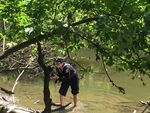
On 9 July, a joint Weimar-Rodentian force landed at the city of Riveria, located in the province of Levare, following a meeting between Cole B. of Wegmat and Jonas Rhymer of Wendatia. Weg forces failed to stop the beachhead; however, they surrounded and barricaded the city, stopping any Urraca Pact advance. Rodentian bombers reportedly used firecrackers on civilian areas.
Breakup of the Urraca Pact
New German invasion of Philmont
On 11 July, Weimar forces invaded Camp Castle Rock, where Philmont was suspected of having encampments in the area. A campaign against the small garrison of Philmont soldiers holding out with no hope of reinforcements coming. For the first 3 days, only a small camp was liberated; however, on 13 June, a more aggressive approach was taken and half the territory was liberated by Weimar troops. The next day, heavy rain impaired operations, but near night fall, heavy fighting erupted along the roads of the territory and ended near the original camp. On the night of 17 July, the final night of occupation, small patrols were launched to disrupted the demoralized and thin supply lines of the Philmont army; on 18 July, the Free Philmont Republic was created shortly following the surrender of the Philmont garrison in the territory.
On 23 July, Weimar was officially kicked from the Urraca Pact, with the two remaining members — Rodentia and Philmont — declaring war on Weimar.
Surrender and dissolution of Philmont
On 25 July, a Weg army, led by Cole Baird, flew into Denver and traveled to Red River, New Mexico, where they camped a night and made final preparations for the expedition. On 26 July, Weg forces arrived in Based Camp; Philmont had little control of Philmont Prima, especially Based Camp. However, many staff employed by the Boy Scouts of America were asked to become citizens of Philmont, to which they agreed.
On the following day, the Weg Expeditional Army left for the village of Magpie, where a battle occurred at a creek crossing. On 28 July, Weg forces sought to capture the city of Urraca, the namesake of the Urraca Pact. A second battle occurred there, where Weg forces were hit with makeshift frisbee weapons used by Philmont Cimmaron units. The next day, Weg forces traveled 6 miles up two passes on the way to the large city of Crater Lake; at the village of Bear Caves, Philmont pushed the Weg army out of the village. However, they pushed the army towards the important city of Crater Lake. Wegmat was under siege on the night of 29 July; in addition, Wegmat lost another engagement while surprise attacked while setting up their bear bags on cables. Following this, Wegmat left Crater Lake towards Fish City.
While stopping for lunch in a valley, Philmontian officers from Rocca de Castello passed them without noticing. In Fish City, there were no Philmontian citizens at all. The next day, the crew of Philmontian officers from Rocca de Castello had to evacuate using vehicles back to Based Camp, as their crew of 9 hiking solders had suffered 4 injuries while walking. Wegmat stayed at Phillips Junction for an hour as there was heavy rain. For the next three days, there were no engagements due to the rainstorm. In those three days, the army hiked 21 miles up Mount Phillips and on 4 August back down to the city of Cipher. The Philmontian government had set up its operations there, including the Senate, party operations, military HQ and cabinet. Generalissimo Sebastion Gustavo agreed that Philmont had no way of functioning as a proper state. As a result, Gustavo signed a surrender to Wegmat and a dissolution of the Philmont Confederation; all land, resources and jurisdiction was officially handed back to the United States, despite the government of Philmont having barely any jurisdiction or resources itself. Gustavo claimed it to be an embarrassment to Philmont Scout Ranch and what it stood for. In the next 2 days, Wegmat's army hiked 17 miles, including a summit of the Tooth of Time, back to Based Camp, now named Base Camp. Wegmat's army drove to Denver and flew back to Midway International Airport.
Cole Baird claims with the dissolution of Philmont and Weimar, the so-called "forever war" had an end in sight.
Fall of Rodentia
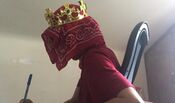
After losing two of its greatest allies, on 8 August, Rodentia withdrew all claims on the southern Rainbowlands. Although the goal of the Liberation Coalition was to end occupation in the Rainbowlands, the coalition then planned to end the Empire of Rodentia. Edwards Oaches promptly moved his office of the Emperor to a bunker in what is now Newberry Rodentian High Command and no longer the Headquarters of the Urraca Pact.
On 10 August, Emperor Oaches formally surrendered to the Liberation Coalition, drawing the war to a close.
Aftermath
After the war ended, relations between Wegmat and Weimar remained tense. The Chavalier Union had been attempting to ally with Weimar during the end of the war. In a shock move, Weimar claimed that it will liberate the PUCS from its government; as a result, the PUCS immediately severed any diplomatic relations with Weimar. The Chavalier Union went downhill after the war, its economic system began crumbling. The New People's Alliance took over the government and the Chavalier Union became a totalitarian dictatorship. The Philmont Confederation completely dissolved, returning all of its claims back to the United States. The Free Philmont Republic however continued in Castle Rock. The Free Philmont Republic remained fairly independent from Weimar. Citizens that lived at Philmont Scout Ranch may have never known about its dissolution. In the surrender agreement, the Empire of Rodentia has to dissolve. Rodentia was split into two occupation zones; the south was occupied by Weimar and the north was occupied by Wegmat. On 15 August, the northern zone including the territories expanded into by the empire were given the Weimar occupation zone. On 22 August the Grand Republic of United Salado was formed. Weimar's re-annexation of Levare was not met well with the now smaller United Labour Front. Layla, the leader of the ULF, promised the death of Weimar and the punishment of Wegmat for working with Weimar. Most members of the ULF had ignored Layla's calls and ditched the organisation. Layla has moved to an unknown place following the war. Wegmat withdrew their state of war on the Empire of Kapreburg after Rodentia's surrender. Wegmat began to focus on the reconstruction of the Rainbowlands and itself after the war, including an updated foreign policy.
Due to the continued tensions between Weimar and Wegmat, there was a lack of trust on either side. Weimar began an aggressive approach to defending its new territories and countering Weg influence. Weimar began working with the Empire of Kapreburg with a plan to invade Wegmat. Anti-Weg sentiment began rising including harassment towards Wegs, humans and deer. Two Kapresh citizens, believed to also be assisted by Weimar intelligence attacked several government buildings across Wegmat. This resulted in the Midlothian War. Wegmat invaded a Kapresh colony before an invasion by both Weimar and Kapreburg began in southern Wegmat. The combat of the war was brief but resulted in the single largest occupation of Weg Land for a week. When the combat ended in late January 2022 a state of war still existed but no combat ensued. After the war the Cicero Spenninger began making a long period of tension between Weg sympathetic nations and nations aligned with Weimar.
International response
Due to micronational warfare being a controversial topic throughout the micronational community, the war was mostly received negatively. Many of the first responses came from those who led nations that had territory in the Rainbowlands. The first responses were mostly in support of the liberation of the Rainbowlands. However, as the war became more known throughout the community, negative reactions from leaders became more common. Naveria was the first nation to retract their claims from the Rainbowlands, followed by Begon. Later, David Hawthorne, monarch of the micronation of Hawthorne and an M.P. in the Parliament of Wegmat, stated that the war was dumb. He later resigned his position as a Member of Parliament. On 18 May, Kingdom of Nichensburg retracted its claims from Des Plaines until the end of the war.
A common argument against the Great Des Plaines Valley War and micronational warfare in general is that it was disrespectful to veterans who served in macronational wars; however, some proponents of the war saw this criticism as hypocritical, as there were no criticisms of the MicroWiki featured picture of April 2021, which was a photo taken during the Tungsten-MACP War.
Notes
References
- ↑ SBC News. ""Saspearian Government declares diplomatic support to Wegmat in the Great Des Plaines Valley War"". Archived from the original on 12 April 2021.



